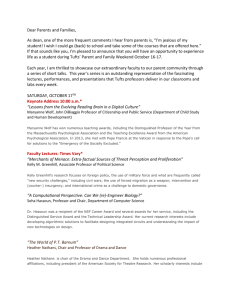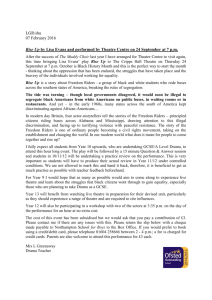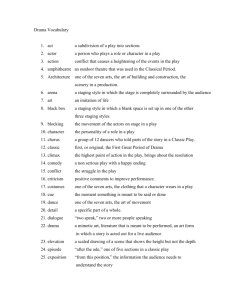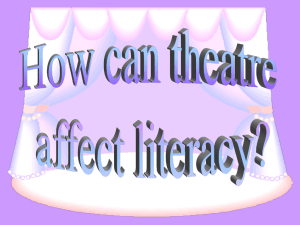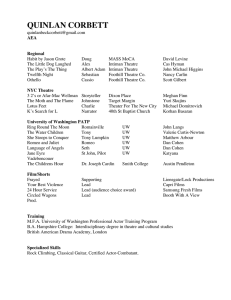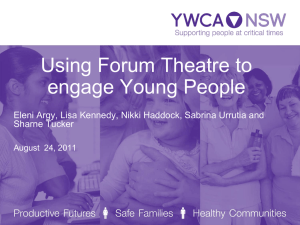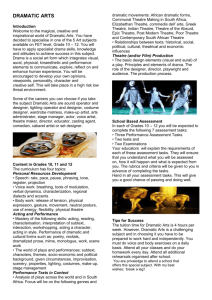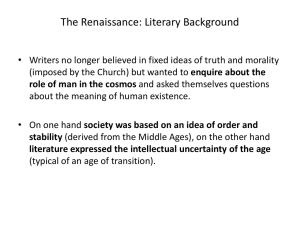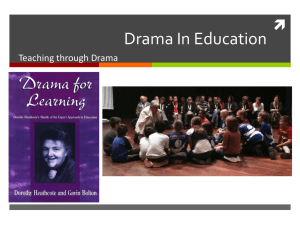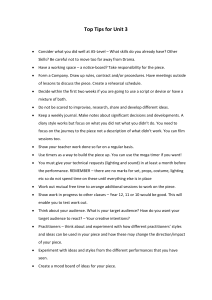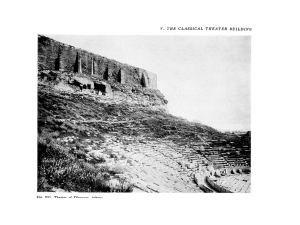PowerPoint Presentation - Intro to Intro to Theatre
advertisement
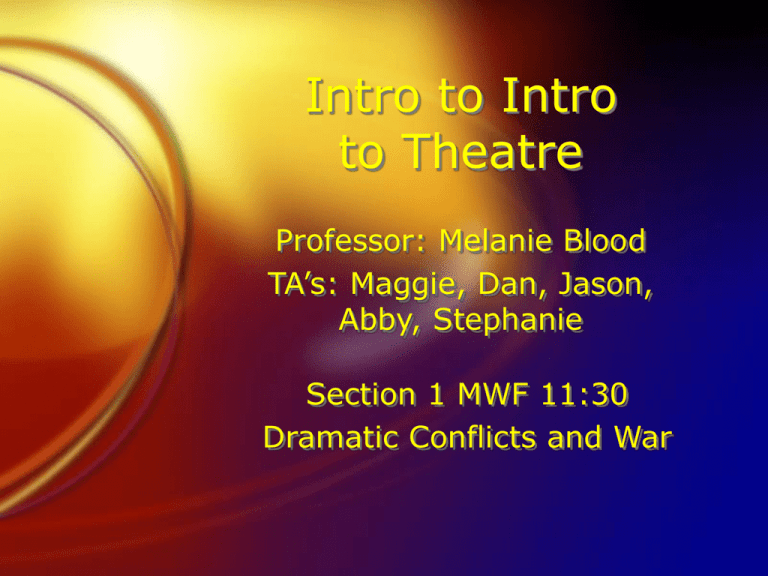
Intro to Intro to Theatre Professor: Melanie Blood TA’s: Maggie, Dan, Jason, Abby, Stephanie Section 1 MWF 11:30 Dramatic Conflicts and War Syllabus Play texts Performances Online readings and lecture notes 2 multiple choice tests, 25% each Short reading quizzes, 20% Participation in breakout sections, 15% Small group projects due at sections, 15% Extra credit opportunities, 10 pts max Origins of Drama Cave paintings Combined purpose: ritual and entertainment Narrative structure Conflict Mimesis Song and dance Cave Paintings Mesolithic Uzbekistan Neolithic India Why drama? Create narratives Enacting makes “real” Humans learn through drama, as children and adults Scopophilia Mirror identification Conflicts must be substantial, or not worthwhile Dramatic conflict and war Dramatic conflicts need substance War makes consequences of choices life and death Justification for war Construction of “enemy” Arguments against war Ethics of wartime actions Responsibilities of leaders and individuals Adjustment to peace, PTSD Artist, Medium and Process, Audience paradigm Compare to other art forms Individual artist vs. group Primary and interpretive artists Actor’s medium is self Dialogue, representing action Other media almost infinite Process of group creation affects product Audience is live and collective Drama effective art form for social problems Representation of action Conflict required for narrative Multiple actors with live presence Live, collective audience Marshall McLuhan (1960’s) The Medium is the Message Real vs. Unreal in Theatre Real People Real actions (ok some faking) Real emotions (usually) Some real objects Live presence Story, characters, situations and dialogue fictional, rehearsed Special effects, lights, some scenery fake Ritual repetition every night More is “real” vs. most art forms Art and Reality Plato’s Cave Book VII Republic Prisoners chained in a cave see only shadows on a wall of objects passing between them and a fire. This is real to them; and they play a game to name them quickly. One is released. Sees the objects casting the shadow, then exits cave. Jean Baudrillard’s Simulacrum “Simulacra and Simulations” Copies do not approach the original; name game not about “real” but we accept if for real. Eventually we can’t tell what is real and what a copy; all are simulations. Is there a clear Reality? Plato had to tell a story to explain his view of reality. He used allegory. It’s not true. Can we understand reality without art? Our senses are flawed. Our experiences are different. We all understand the world through narratives and images -- see any religion. Art can tell new stories. Or old stories in new ways. Or help us identify with someone different. Although framed as NOT real, it partakes of same slippage of simulations Baudrillard discussed. Live Theatre in US Today Professional, for Profit: Broadway, some tours of Broadway shows Professional, Not-for-Profit: OffBroadway, Regional Theatres, many tours, some Off-off-Broadway Semi-Professional, NFP: Off-offBroadway, smaller regional theatres, most ethnic, identity-based and children’s theatre Educational theatre Community theatre Performance For more on range of theatre in New York City, see www.playbill.com End of first slideshow

